Technical Data Top chain Handling
Handling top chains
3-1. Disconnecting and Connecting Chain
Note)
- 1. Refer to the disconnecting and connecting of plastic modular chain.
- 2. Refer to the disconnecting and connecting for TTP, TT, TPS-KV, TPU-KV, TRU, TTKU and TS.
3-1-1. When D-pins are used (except TPUN555)
The chain can be disconnected at any link and the pin can be removed from either the left or the right.
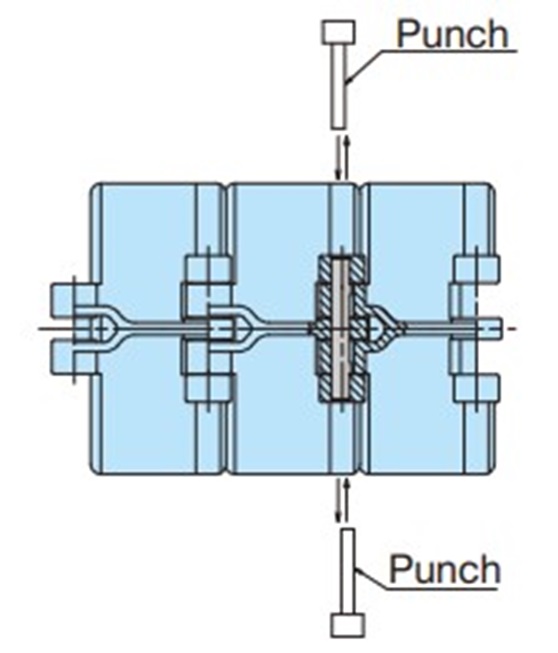
3-1-2. When knurled pins are used
To disconnect, place a punch on the end of the connecting pin on the side that is not knurled and lightly tap it with a hammer to remove it. To reconnect, place a punch on the end of the connecting pin on the knurled side and lightly tap it with a hammer to insert it.
(For TTPDH and TTPDH-LBP only, the knurled side is inserted from the same side even for reconnecting. )
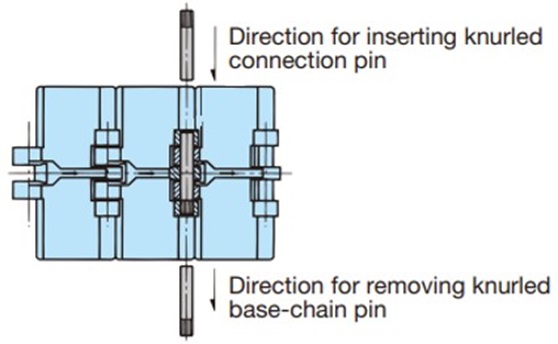
3-1-3. TTUPM838H
Since this is a D-pin type, it can be inserted and removed from either the left or the right. Use a punch with a 6 to 7.5 mm outer diameter.
The insert depth should not be excessive or insufficient.
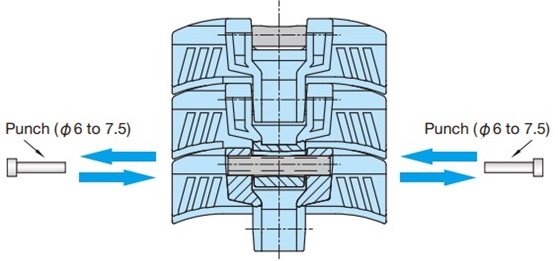
If the outer diameter of the punch is Less than 6 mm or more than 7.5 mm, the chain and pin will be damaged.
3-1-4. TN/TNU/TRU/TP-PT/TP-PTS/TP-1873T
The pin for the connecting link is loosely fitted on the appropriate side of the outer plate.
When disconnecting the chain at links other than the connecting link, remove a pair of pins parallel to one another by means of a chain vice.
Once a chain is disconnected at links other than the connecting link, the link cannot be reused.
3-1-5. TP-1843G形/TP-1873G
One brown and one white top plate for the connecting are included. The white top plate can be used for connecting part identification.
The pin for the connecting link is loosely fitted on the appropriate side of the outer plate.
When disconnecting the chain at links other than the connecting link, remove a pair of pins parallel to one another by means of a chain vice.
Once a chain is disconnected at links other than the connecting link, the link cannot be reused.
3-1-6. ST/RT
All the pins are loosely fitted in the outer plates. The chain can be disconnected at any link and the pin can be removed from either the left or the right.
3-1-7. TO/TU
Remove the pin from the side opposite to the top plate.
3-1-8. TS
The chain can be disconnected at any link. Remove the pin from the side where the cotter pin is installed.
3-1-9. TTKU
The pin for the connecting link is loosely fitted on the appropriate side of the outer plate.
When disconnecting a chain at links other than the connecting link, grind the end of the pin since the pin is riveted and remove the pair of pins parallel to one another.
Once a chain is disconnected at links other than the connecting link, the link cannot be reused.
3-1-10. TPUN555
Pin insertion direction is from one direction only. Place a punch on the opposite end of the pin from the insertion direction, and tap it lightly with a hammer to remove it.
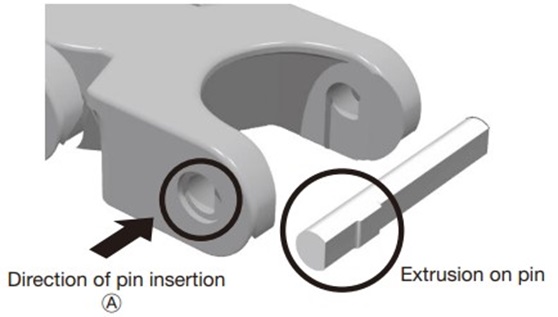
3-1-11. For Plastic Crescent Top Chain
1. Remove the snap cotter pin from the connecting pin, and carefully pull the offset link up and off.
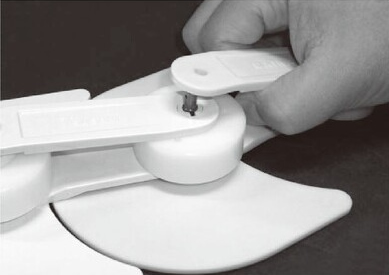
2. Turn the offset link 90 degrees.
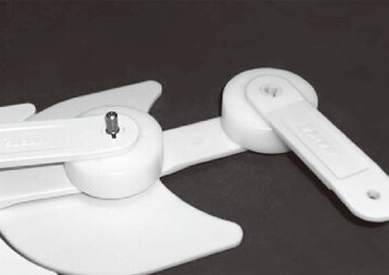
3. Remove the main link and the connecting pin from the previous link.
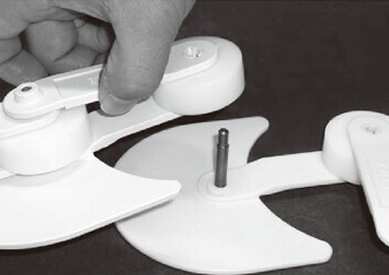
Note) When disconnecting, be sure not to pull the connecting pin out of the main link.
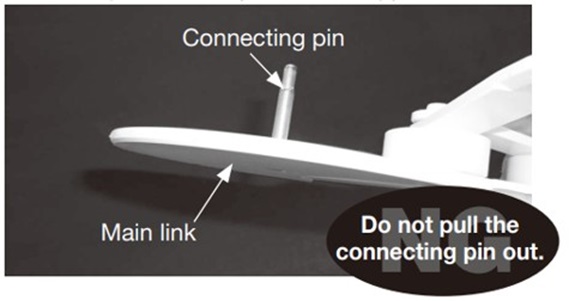
3-2. Points of Note When Disconnecting/Connecting, and Precautions for Use of Plastic Pin Chain
| Products | TTP-P, TTPH-P, TPS-P, TPH-P, TPM-P-SN, TTUP-P, TTUPM-P, TTUPM-PC, TPU-P, TTUPM838H, TPUSR-P, TP-UB36P, RSP40P, RSP60P, RSP60P-CU |
|---|
- 1. Start up slowly and stop slowly.
- 2. Do not apply initial tension to the chain.
- 3. When disconnecting chains that have engineering plastic pins, do not reuse a pin once removed since it may not engage properly or it may even come loose.
Follow the proper procedures below. - 4. Precautions for Plastic Modular Chain are described in its own section.
- 5. When using chains with engineering plastic pins under wet conditions, make sure that the temperature does not exceed 60°C.
Connecting D-pin
- 1)Use the exclusively prepared connecting D-pin (base pin: white, connecting pin: orange) to connect the links.
- 2)The connecting D-pin is colored orange so as to distinguish it from base-chain pins (color: white).
- 3)One connecting D-pin is provided per chain as a spare.
Procedure
(1) Disconnecting
- 1)Place a punch which is a little thinner than the pin hole, on the edge of the D-pin and lightly knock it with a hammer to remove it. The pin may be removed from either the left or the right.
- 2)Never reuse D-pin once removed.
(2) Connecting
- 1)Use the exclusively prepared connecting D-pin (color: orange).
- 2)Place a punch on the edge of the D-pin and lightly knock it with a hammer to insert it into the hole in the link.
The pin may be inserted from either side, left or the right. Do not cut the chain where a connecting D-pin (color: orange) is already inserted. - 3)Make sure that the connecting D-pin is inserted so that it is recessed an equal amount on both sides from the edges of the hinge.
- 4)Check whether the connected chain flexes smoothly.

